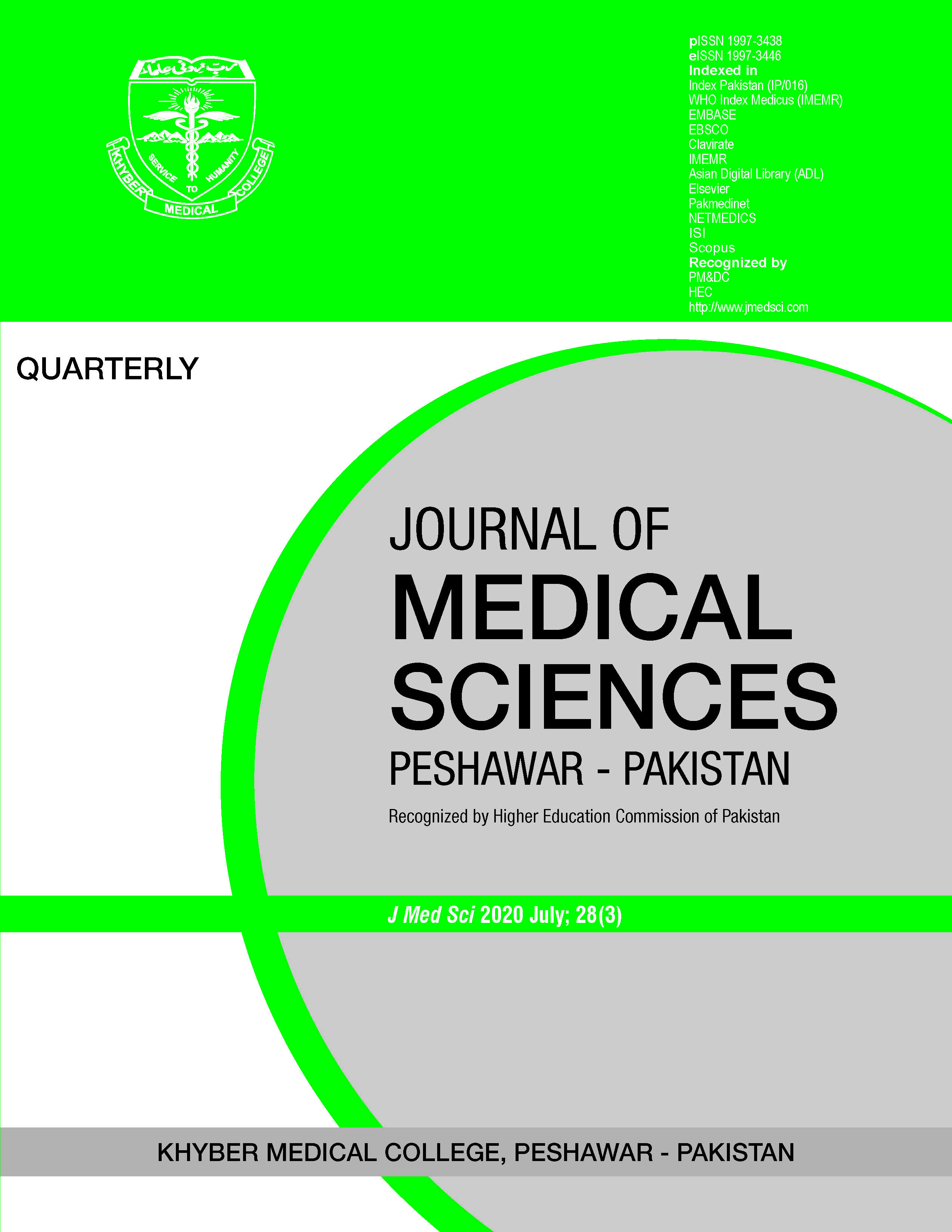The Diagnostic accuracy of the Belin/Ambrosio enhanced ectasia total deviation display (BAD-D) in diagnosing keratoconus taking tomographic and biomechanical index (TBI) as the gold standard
Keywords:
Corvis biomechanical index, Belin/Ambrosio enhanced ectasia total deviation display; Tomographic and biomechanical indexAbstract
Purpose
To compare the diagnostic ability of the Belin/Ambrosio enhanced ectasia index in keratoconus screening taking tomographic and biomechanical index (TBI) as the gold standard
Methods
One thousand eyes of five hundred patients were included in this cross sectional study. Patients coming to Amanat eye hospital Peshawar from July 2018 to June 2019 for keratorefractive laser procedure or collagen cross linkage were randomly included. Amanat eye hospital Peshawar is a private eye care centre having diagnostic and photorefractive laser treatment facilities. The tools used for the study were the Oculus Pentacam HR and the Corvis ST. SPSS version 23 was used for statistical analysis of collected data.
Results
The mean BAD-D value was 3.080+/- 4.450 SD, the s.e. of the mean was 0.140, 95% confidence interval (c.i.) of 2.805 to 3.356. The range was 0.00 to 40.21.
The mean TBI value was 0.465+/_ 0.392 SD, s.e. was 0.124 with a 95% c. i. of 0.222 to 0.708. The range of TBI was 0.00 to 1.00.
For BAD-D, sensitivity was 75.6%, specificity was 100 %, positive predictive value was 100% and the negative predictive value was 72.3%.
Conclusion
The current study showed acceptable accuracy of BAD-D in terms of specificity and sensitivity. It is recommended that its result should be interpreted along with other topographic, and tomographic parameters.
Downloads
Published
How to Cite
Issue
Section
License
All articles published in the Journal of Medical Sciences (JMS) are licensed under the Creative Commons Attribution 4.0 International License (CC-BY 4.0). Under the CC BY 4.0 license, author(s) retain the ownership of the copyright publishing rights without restrictions for their content, and allow others to copy, use, print, share, modify, and distribute the content of the article even for commercial purposes as long as the original authors and the journal are properly cited. No permission is required from the author/s or the publishers for this purpose. Appropriate attribution can be provided by simply citing the original article. The corresponding author has the right to grant on behalf of all authors, a worldwide license to JMS and its licensees in all forms, formats, and media (whether known now or created in the future), The corresponding author must certify and warrant the authorship and proprietorship and should declare that he/she has not granted or assigned any of the article’s rights to any other person or body.
The corresponding author must compensate the journal for any costs, expenses, or damages that the JMS may incur as a result of any breach of these warranties including any intentional or unintentional errors, omissions, copyright issues, or plagiarism. The editorial office must be notified upon submission if an article contains materials like text, pictures, tables, or graphs from other copyrighted sources. The JMS reserves the right to remove any images, figures, tables, or other content, from any article, whether before or after publication, if concerns are raised about copyright, license, or permissions and the authors are unable to provide documentation confirming that appropriate permissions were obtained for publication of the content in question.




